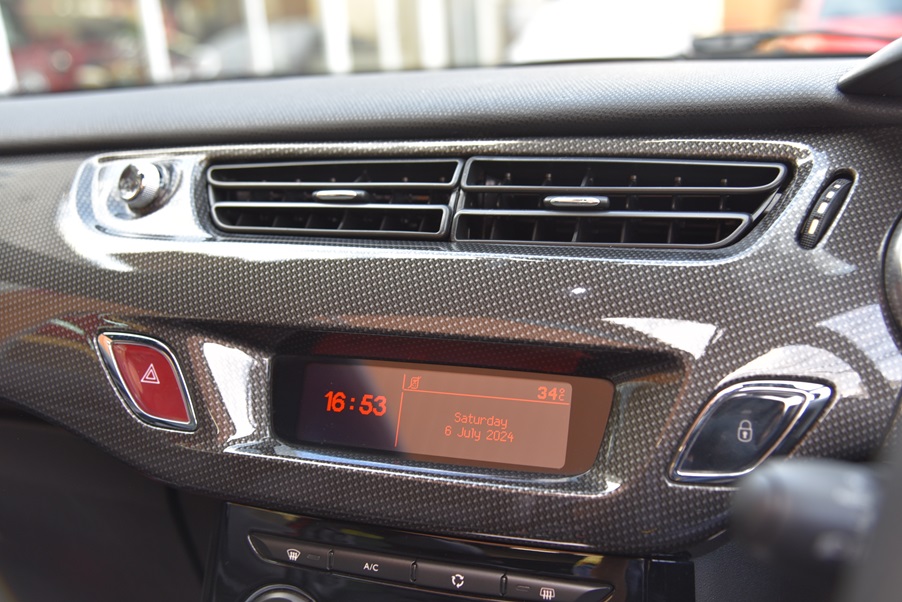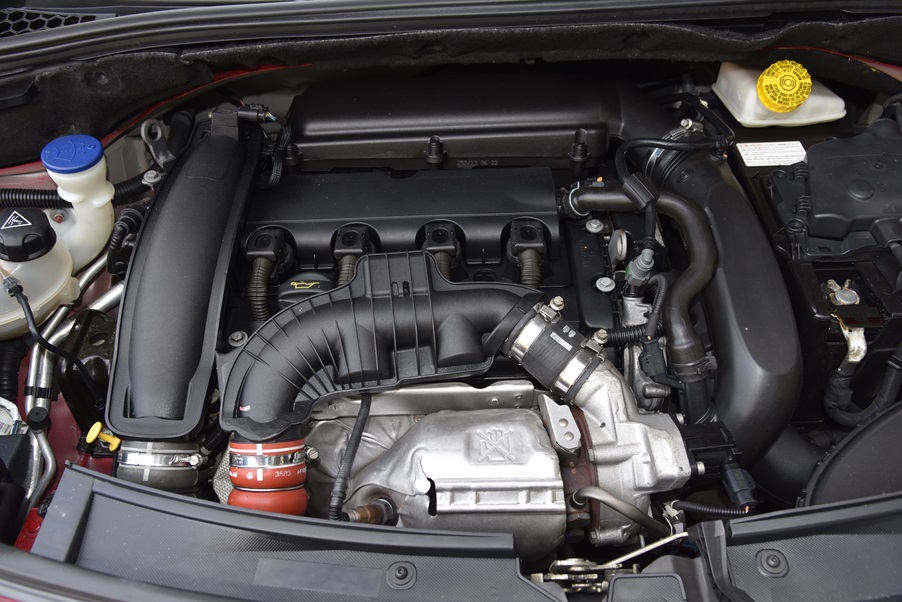6MTマニュアル 5人乗りオープンカー!シトロエン DS3 カブリオ スポーツシック 6MT 5人乗りオープンエアー 新入庫!
2024年07月06日
6MTマニュアル 5人乗りオープンカー!
シトロエン DS3 カブリオ スポーツシック 6MT 5人乗りオープンエアー 新入庫!
1.6Lターボ16V 6速MT 5人乗り電動ソフトトップオープンエア ブラックレザーシート HiFiオーディオ フルLEDインテリア セミオープン」「フルオープン」3連メーター レザーハンドル 純正CDオーディオ ETC Pソナー クルコン 検R7年3月 禁煙美車 機関良好 点検整備付
車輌の詳細、セール価格、詳細画像はコチラをご覧下さい。
この記事へのコメント
(Refugia)
Testosterone Enanthate An Overview
Caring for Your Pelvic Floor: A Complete Guide to Understanding, Treating, and Preventing Pelvic Floor Disorders
Pelvic floor disorders (PFDs) affect nearly one?third of adults at
some point in their lives. From urinary urgency and fecal
incontinence to pelvic organ prolapse and sexual dysfunction, the symptoms can be uncomfortable, embarrassing, and sometimes debilitating.
The good news? Most PFDs are treatable?and many can even be
prevented with simple lifestyle changes.
Below is a step?by?step playbook that covers what you need
to know about diagnosis, evidence?based treatment options,
and how to protect your pelvic floor for life.
---
1. Understanding Pelvic Floor Disorders
Disorder Common Symptoms Typical Causes
Urinary incontinence (stress/urge) Leakage with coughing/sneezing or sudden urge Weak pelvic muscles, nerve damage, pregnancy, surgery
Overactive bladder Frequent urination, urgency, nocturia Neurological disorders, medications, hormonal changes
Pelvic organ prolapse Bulge/pain in the vaginal area, pressure Aging,
childbirth, obesity, chronic straining
Fecal incontinence Loss of bowel control Anal sphincter damage, nerve injury
Chronic pelvic pain Pain in lower abdomen/hips that doesn't improve with treatment Endometriosis, musculoskeletal issues,
infection
---
4. What You Should Do
Schedule an appointment with a urogynecologist or specialized pelvic floor
physiotherapist within the next few weeks.
Bring a list of your symptoms and any medications you’re taking (including over?the?counter pain relievers).
Ask for a physical exam ? a thorough check can rule out serious conditions like an ovarian cyst or prolapse.
Request imaging if needed ? ultrasound or MRI may be used to
look at pelvic organs, but these are usually only necessary
after a basic exam confirms something is abnormal.
5. When You Should Seek Immediate Care
Sudden, severe abdominal pain that is worse than your usual discomfort
Fever, chills, or vomiting (could signal infection)
Bleeding that isn’t typical for you or heavy vaginal bleeding
Difficulty breathing, chest tightness, fainting
If any of these occur, go to the nearest emergency department right away.
Bottom Line
Your pain is likely normal and caused by your cycle.
A simple pelvic exam can confirm this. If nothing
unusual shows up, you probably don’t need imaging or labs.
Imaging or blood work are reserved for specific red flags?unusual severity, fever, heavy bleeding,
etc.
If you’re ever unsure or the pain changes, reach out to your primary care provider or
gynecologist. They can order a quick exam and decide if anything more is needed.
Feel better soon! ?
Caring for Your Pelvic Floor: A Complete Guide to Understanding, Treating, and Preventing Pelvic Floor Disorders
Pelvic floor disorders (PFDs) affect nearly one?third of adults at
some point in their lives. From urinary urgency and fecal
incontinence to pelvic organ prolapse and sexual dysfunction, the symptoms can be uncomfortable, embarrassing, and sometimes debilitating.
The good news? Most PFDs are treatable?and many can even be
prevented with simple lifestyle changes.
Below is a step?by?step playbook that covers what you need
to know about diagnosis, evidence?based treatment options,
and how to protect your pelvic floor for life.
---
1. Understanding Pelvic Floor Disorders
Disorder Common Symptoms Typical Causes
Urinary incontinence (stress/urge) Leakage with coughing/sneezing or sudden urge Weak pelvic muscles, nerve damage, pregnancy, surgery
Overactive bladder Frequent urination, urgency, nocturia Neurological disorders, medications, hormonal changes
Pelvic organ prolapse Bulge/pain in the vaginal area, pressure Aging,
childbirth, obesity, chronic straining
Fecal incontinence Loss of bowel control Anal sphincter damage, nerve injury
Chronic pelvic pain Pain in lower abdomen/hips that doesn't improve with treatment Endometriosis, musculoskeletal issues,
infection
---
4. What You Should Do
Schedule an appointment with a urogynecologist or specialized pelvic floor
physiotherapist within the next few weeks.
Bring a list of your symptoms and any medications you’re taking (including over?the?counter pain relievers).
Ask for a physical exam ? a thorough check can rule out serious conditions like an ovarian cyst or prolapse.
Request imaging if needed ? ultrasound or MRI may be used to
look at pelvic organs, but these are usually only necessary
after a basic exam confirms something is abnormal.
5. When You Should Seek Immediate Care
Sudden, severe abdominal pain that is worse than your usual discomfort
Fever, chills, or vomiting (could signal infection)
Bleeding that isn’t typical for you or heavy vaginal bleeding
Difficulty breathing, chest tightness, fainting
If any of these occur, go to the nearest emergency department right away.
Bottom Line
Your pain is likely normal and caused by your cycle.
A simple pelvic exam can confirm this. If nothing
unusual shows up, you probably don’t need imaging or labs.
Imaging or blood work are reserved for specific red flags?unusual severity, fever, heavy bleeding,
etc.
If you’re ever unsure or the pain changes, reach out to your primary care provider or
gynecologist. They can order a quick exam and decide if anything more is needed.
Feel better soon! ?
[2025-10-01 17:19:40.875087]
URL
(Margarita)
Anavar Dianabol Cycle Opinions? Pharma TRT
**The Ultimate Guide to Getting Fit with T?Nation**
Whether you’re a seasoned bodybuilder or just starting
out on your fitness journey, *T?Nation* offers a comprehensive ecosystem of
workouts, nutrition guidance, community support, and gear that can help you reach your goals
faster?and more consistently?than going it alone.
Below is an in?depth look at what T?Nation brings to the table and how you can use its tools to transform your body.
---
## 1. Workouts: Structured, Science?Backed Training Plans
### ? The "Classic" Split
The flagship program is a classic 5?day split (Chest/Triceps, Back/Biceps, Shoulders/Legs, etc.).
Each day focuses on both hypertrophy and strength, with periodized rep ranges (8?12
for muscle growth, 4?6 for maximal strength).
### ? The "Power" Program
For athletes who want to combine Olympic lifts with bodybuilding,
the Power program adds snatch, clean & jerk, and accessory work while keeping muscle?building volume high.
### ? "Superset" Variants
If you’re short on time, supersets or drop?sets are available.
These reduce the number of rest periods and keep intensity up, ideal for
30?45 minute sessions.
### How to choose?
- **Goal**: If your goal is pure muscle size, stick with the bodybuilding program.
- **Time**: For 2?3 hours a week, use supersets or drop?sets;
for 5+ hours, go full volume.
- **Experience**: Beginners might prefer lower intensity but higher frequency (e.g., 4?5 days per
week).
#### Example Workout Plan
| Day | Focus | Sets | Reps |
|-----|-------|------|------|
| Mon | Chest + Triceps | 5?6 | 8?12 |
| Tue | Back + Biceps | 5?6 | 8?12 |
| Wed | Rest / Active Recovery | - | - |
| Thu | Shoulders + Arms | 4?5 | 10?15 |
| Fri | Full Body (Light) | 3?4 | 12?20 |
| Sat/Sun | Rest or Light Cardio | - | - |
- **Progression**: Increase weight by ~2.5?5% each
week if you can complete all sets/ reps.
- **Deload**: Every 6?8 weeks, reduce intensity (50%) for a week.
### 3. Body?Composition Goals
| Goal | Target | Timeframe |
|------|--------|-----------|
| Reach <30?% body fat (men) / <40?% (women) | ~24?26?% | 12?16 weeks |
| Reduce weight to 75?kg | -6?kg | 12?14 weeks |
| Increase lean mass by ~3?kg | +3?kg | 12?16 weeks |
- **Progress Tracking**: Weight & body fat every 4?weeks (use DXA or BIA). If you see weight plateau but body fat falling, that indicates muscle gain.
- **Adjust Caloric Intake**: If after 6 weeks you’re not losing ~0.5?kg/ week, reduce intake by another 150?200?kcal/day. Avoid dropping below 1400?kcal for women (or 1600?kcal if you have a high activity level).
- **Macronutrient Balance**: Keep protein at ~1.6?g/kg (~90?110?g) to support muscle; fats can be around 25?30% of calories, carbs the remainder.
### Strength?Training Program (4×/week)
| Day | Focus | Exercises | Sets × Reps |
|-----|-------|-----------|-------------|
| **Mon ? Upper Power** | Heavy compound lifts, lower rep range | Bench press (or push?ups) 3×5
Overhead press 3×5
Barbell rows 3×6?8
Biceps curl 2×10 | |
| **Tue ? Lower Strength** | Squat & deadlift focus | Back squat 4×4?6
Deadlift (or Romanian) 3×4?6
Leg press or lunges 3×10 | |
| **Thu ? Upper Hypertrophy** | Moderate rep range, accessory work | Incline dumbbell press 3×8?12
Dumbbell lateral raises 3×12?15
Pulldowns 3×10?12
Triceps pushdown 3×10 | |
| **Fri ? Lower Hypertrophy & Core** | Accessory and conditioning | Front squat or hack squat 3×10?12
Calf raise 4×15?20
Core circuit (planks, side planks) | |
### How to Use This Schedule
1. **Warm-Up**: Begin each session with a dynamic warm-up tailored to the day's focus?5-10 minutes of light cardio and mobility drills.
2. **Progressive Overload**: Increase weights gradually as you gain strength; aim for a 5% increment once you can complete your target reps comfortably.
3. **Recovery**: After workouts, stay hydrated, consume protein within an hour post-exercise, and get adequate sleep to support muscle repair.
4. **Adaptation**: If the routine feels too intense or too light, adjust either by adding sets or decreasing the load accordingly.
This balanced approach not only enhances your strength but also improves muscular endurance?key for everyday activities and long-term fitness resilience.
Sure! Let's dive into a practical workout plan that you can start with immediately, without needing any special equipment:
### 1. Warm-Up (5-10 Minutes)
Start by getting your heart rate up and muscles warmed through simple exercises:
- **Jog in place** or do some light marching.
- **Arm circles**: Extend arms out to the side and rotate them forward and backward.
- **Leg swings**: Hold onto a stable surface and swing each leg forward and back.
### 2. Main Workout (20-30 Minutes)
This portion is split into three rounds, focusing on strength, endurance, and flexibility:
#### Strength Circuit
- **Push-ups** (or knee push-ups if standard ones are too hard): 3 sets of 8-12 reps.
- **Squats**: 3 sets of 15 reps. Keep your feet shoulder-width apart and focus on a proper form.
#### Endurance Circuit
- **Jumping jacks** or **high knees**: 2 minutes each.
- **Plank hold**: Hold for 30 seconds, rest for 30 seconds, repeat twice more.
#### Flexibility Circuit
- **Forward fold**: Stand and slowly bend forward at the hips, keeping your back straight.
- **Child’s pose**: Sit on your heels, stretch arms forward.
### Additional Tips
1. **Warm-up**:
- Spend 5-10 minutes doing light cardio or dynamic stretches before you start exercising to reduce injury risk.
2. **Cool-down**:
- After finishing the workout, spend a few minutes stretching major muscle groups (quads, hamstrings, shoulders) for flexibility and recovery.
3. **Progression**:
- Increase the duration of each exercise by 5-10% every week or add an extra set if you feel comfortable.
4. **Rest Days**:
- Allow rest days between workouts to let your muscles recover and grow.
5. **Stay Hydrated**:
- Keep water nearby and drink before, during, and after the workout.
6. **Listen to Your Body**:
- If a movement causes pain (sharp or intense), stop immediately. Seek medical advice if necessary.
### Sample 4-Week Beginner Plan
| Week | Monday (Bodyweight) | Wednesday (Cardio) | Friday (Bodyweight + Cardio) |
|------|---------------------|--------------------|------------------------------|
| 1 | Push-ups, squats, planks (2 sets each) | 15?min brisk walk or light jog | Push-ups, squats, planks (3 sets) + 10?min run |
| 2 | Same as Week 1 but increase push?ups to 12 reps | Increase to 20 min jog/walk | Add 5?minute sprint intervals (30s sprint / 60s walk) |
| 3 | Add dips and lunges (2 sets each) | Run for 25 min at a steady pace | Include 15?min hill climb or stair workout |
| 4 | Increase all reps by 10% | Run for 30 min + speed work (intervals) | Perform full body circuit: push?ups, squats, burpees, plank |
**Key Principles**
- **Progressive Overload:** Add reps, sets, or weight each week.
- **Rest & Recovery:** Allow at least one rest day after intense sessions; sleep 7?9 hrs/night.
- **Nutrition:** Consume protein-rich meals (1.2?1.6?g/kg body?weight), maintain a slight caloric surplus if muscle growth is desired.
---
## 4. Sample 4?Week Strength & Hypertrophy Program
| Day | Focus | Exercises (Sets × Reps) | Notes |
|-----|-------|------------------------|-------|
| **Mon** | Upper?Body Power | Bench Press 3×5, Overhead Press 3×6, Bent?Over Row 4×8, Pull?ups 3×max | Use 70?80?% of 1RM for main lifts |
| **Tue** | Lower?Body Hypertrophy | Back Squat 4×10, Romanian Deadlift 3×12, Leg Press 3×15, Calf Raises 4×20 | Keep RPE ~7 |
| **Wed** | Active Recovery | Light cardio + mobility work | |
| **Thu** | Upper?Body Hypertrophy | Incline DB Press 4×10, Lateral Raises 3×12, Face Pulls 3×15, Hammer Curls 3×12 | |
| **Fri** | Lower?Body Strength | Front Squat 5×5, Deadlift 3×3, Hip Thrust 3×8 | RPE ~9 |
| **Sat** | Optional conditioning or rest | |
| **Sun** | Rest | |
- **Intensity Guidelines:**
- *Moderate Intensity:* 50?70% of one?rep max (1RM) → RPE 4?6.
- *High Intensity:* 70?85% 1RM → RPE 7?8.
- *Very High Intensity:* >85% 1RM → RPE 9?10.
- **Progression Strategy:**
1. **Linear Phase (Weeks?1?4):** Increase load by ~2.5?5?kg per week while keeping reps
constant.
2. **Repetition Accumulation (Weeks?5?8):** Add a set or increase
reps each session, maintaining the same load.
3. **Intensity Surge (Weeks?9?12):** Shift to higher
loads (~10?15?% increase) with fewer reps; incorporate
periodization blocks.
- **Monitoring Indicators:**
- *Strength gains:* >5?% improvement in one?rep max over a month indicates successful
stimulus.
- *Hypertrophy:* Visible increases in muscle girth (?1?cm per month).
- *Recovery:* Persistent soreness beyond 48?72?h or declining performance suggests overreaching;
adjust volume accordingly.
---
## 4. Training Program
| Day | Focus | Exercise(s) | Sets | Reps | RPE / Tempo |
|-----|---------------------|-------------------------------------------|------|---------------|------------------|
| 1 | Upper?body strength | **Bench Press** (Barbell)
**Pull?Ups** (weighted if possible) | 4?5 | 3?5
| 8?9 / 2?sec down |
| | | **Dumbbell Row** (single?arm) | 3 | 6?8 |
7?8 |
| | | **Overhead Press** (Barbell) | 3 | 4?6 | 8?9 / 2?sec down |
| | | **Triceps Dips** (weighted if possible) | 3 | 6?10 | 7?8 |
| | | **Biceps Curl** (Barbell or Dumbbells) | 3 | 6?10 |
7?8 |
|-----|-------------------------------------------|
| 2 | **Lower Body & Core** |
|-----|-------------------------------------------|
| 1 | Warm?up: light cardio + dynamic stretches |
| 2 | Squats (bodyweight or weighted) |
| 3 | Lunges |
| 4 | Glute Bridge/Deadlift |
| 5 | Calf Raise |
| 6 | Core Circuit (Plank, Side Plank, Bird?Dog)|
|-----|-------------------------------------------|
### 2. Choosing a Training Frequency
- **Beginner**: 3 sessions per week (e.g., Mon/Wed/Fri).
- **Intermediate**: 4?5 sessions per week; split body?parts or
full?body with varying intensity.
- **Advanced**: 5?6 sessions, often with a periodized plan.
If you are just starting and have other commitments, stick to **3 workouts** a week.
That gives the muscles enough recovery time while still stimulating growth.
### 3. How Many Sets Per Exercise?
| Training Level | Sets per Exercise (Average)
|
|----------------|-----------------------------|
| Beginner | 2?3 |
| Intermediate | 3?4 |
| Advanced | 4?6+ |
- **Beginner**: Keep it simple. Two to three sets are enough for the body to adapt, especially
if you’re new to training.
- **Intermediate/Advanced**: More volume (more sets) means more
total work for each muscle group.
### 4. How Many Repetitions per Set?
| Goal | Reps |
|------|------|
| Hypertrophy (muscle growth) | 8?12 |
| Strength | 3?6 |
| Endurance | 15+ |
For building muscle, the sweet spot is **8?12 reps**.
If you can do more than 12 in a set and still feel challenged at the end,
you’re not lifting enough weight for hypertrophy.
### 5. Total Volume per Muscle Group
A quick way to estimate total volume (the amount of work done)
is:
```
Volume = Sets × Reps × Weight
```
If you do **3 sets of 10 reps** at **50?kg**, your total volume for that exercise is:
```
3 × 10 × 50 = 1500 kg
```
For a week, you might want to hit each muscle group with several exercises (e.g., bench press, overhead
press, chest fly). Summing the volumes across those gives you an overall
workload estimate.
### 6. Example Weekly Plan for a Beginner
| Exercise | Sets | Reps | Weight |
|----------|------|------|--------|
| Bench Press | 3 | 10 | 50?kg |
| Overhead Press | 3 | 8 | 30?kg |
| Bent?Over Row | 3 | 12 | 40?kg |
| Squat (body weight or light bar) | 3 | 15 | 20?kg |
| Deadlift (light) | 2 | 10 | 60?kg |
*Total weekly volume*: Sum of **sets × reps × weight** for each exercise.
### How to use this table
1. **Track your actual lifts**: Write the exact weight you used in a training log.
2. **Calculate your total volume**: For each exercise,
multiply the number of sets by the number of repetitions and
then by the weight lifted. Add all exercises together for
the weekly total.
3. **Compare to the reference table**: If your weekly total is close to
or exceeds the values in the example, you are training
at a comparable intensity.
- *Below*: You may need more volume (increase sets, reps, or load).
- *Above*: Your program might be too intense for your recovery capacity; consider reducing volume.
4. **Adjust accordingly**: Use these insights to modify your next training cycle.
By referencing this table you can gauge how your workload compares with a standard hypertrophy protocol and make informed
decisions about your training plan.
**The Ultimate Guide to Getting Fit with T?Nation**
Whether you’re a seasoned bodybuilder or just starting
out on your fitness journey, *T?Nation* offers a comprehensive ecosystem of
workouts, nutrition guidance, community support, and gear that can help you reach your goals
faster?and more consistently?than going it alone.
Below is an in?depth look at what T?Nation brings to the table and how you can use its tools to transform your body.
---
## 1. Workouts: Structured, Science?Backed Training Plans
### ? The "Classic" Split
The flagship program is a classic 5?day split (Chest/Triceps, Back/Biceps, Shoulders/Legs, etc.).
Each day focuses on both hypertrophy and strength, with periodized rep ranges (8?12
for muscle growth, 4?6 for maximal strength).
### ? The "Power" Program
For athletes who want to combine Olympic lifts with bodybuilding,
the Power program adds snatch, clean & jerk, and accessory work while keeping muscle?building volume high.
### ? "Superset" Variants
If you’re short on time, supersets or drop?sets are available.
These reduce the number of rest periods and keep intensity up, ideal for
30?45 minute sessions.
### How to choose?
- **Goal**: If your goal is pure muscle size, stick with the bodybuilding program.
- **Time**: For 2?3 hours a week, use supersets or drop?sets;
for 5+ hours, go full volume.
- **Experience**: Beginners might prefer lower intensity but higher frequency (e.g., 4?5 days per
week).
#### Example Workout Plan
| Day | Focus | Sets | Reps |
|-----|-------|------|------|
| Mon | Chest + Triceps | 5?6 | 8?12 |
| Tue | Back + Biceps | 5?6 | 8?12 |
| Wed | Rest / Active Recovery | - | - |
| Thu | Shoulders + Arms | 4?5 | 10?15 |
| Fri | Full Body (Light) | 3?4 | 12?20 |
| Sat/Sun | Rest or Light Cardio | - | - |
- **Progression**: Increase weight by ~2.5?5% each
week if you can complete all sets/ reps.
- **Deload**: Every 6?8 weeks, reduce intensity (50%) for a week.
### 3. Body?Composition Goals
| Goal | Target | Timeframe |
|------|--------|-----------|
| Reach <30?% body fat (men) / <40?% (women) | ~24?26?% | 12?16 weeks |
| Reduce weight to 75?kg | -6?kg | 12?14 weeks |
| Increase lean mass by ~3?kg | +3?kg | 12?16 weeks |
- **Progress Tracking**: Weight & body fat every 4?weeks (use DXA or BIA). If you see weight plateau but body fat falling, that indicates muscle gain.
- **Adjust Caloric Intake**: If after 6 weeks you’re not losing ~0.5?kg/ week, reduce intake by another 150?200?kcal/day. Avoid dropping below 1400?kcal for women (or 1600?kcal if you have a high activity level).
- **Macronutrient Balance**: Keep protein at ~1.6?g/kg (~90?110?g) to support muscle; fats can be around 25?30% of calories, carbs the remainder.
### Strength?Training Program (4×/week)
| Day | Focus | Exercises | Sets × Reps |
|-----|-------|-----------|-------------|
| **Mon ? Upper Power** | Heavy compound lifts, lower rep range | Bench press (or push?ups) 3×5
Overhead press 3×5
Barbell rows 3×6?8
Biceps curl 2×10 | |
| **Tue ? Lower Strength** | Squat & deadlift focus | Back squat 4×4?6
Deadlift (or Romanian) 3×4?6
Leg press or lunges 3×10 | |
| **Thu ? Upper Hypertrophy** | Moderate rep range, accessory work | Incline dumbbell press 3×8?12
Dumbbell lateral raises 3×12?15
Pulldowns 3×10?12
Triceps pushdown 3×10 | |
| **Fri ? Lower Hypertrophy & Core** | Accessory and conditioning | Front squat or hack squat 3×10?12
Calf raise 4×15?20
Core circuit (planks, side planks) | |
### How to Use This Schedule
1. **Warm-Up**: Begin each session with a dynamic warm-up tailored to the day's focus?5-10 minutes of light cardio and mobility drills.
2. **Progressive Overload**: Increase weights gradually as you gain strength; aim for a 5% increment once you can complete your target reps comfortably.
3. **Recovery**: After workouts, stay hydrated, consume protein within an hour post-exercise, and get adequate sleep to support muscle repair.
4. **Adaptation**: If the routine feels too intense or too light, adjust either by adding sets or decreasing the load accordingly.
This balanced approach not only enhances your strength but also improves muscular endurance?key for everyday activities and long-term fitness resilience.
Sure! Let's dive into a practical workout plan that you can start with immediately, without needing any special equipment:
### 1. Warm-Up (5-10 Minutes)
Start by getting your heart rate up and muscles warmed through simple exercises:
- **Jog in place** or do some light marching.
- **Arm circles**: Extend arms out to the side and rotate them forward and backward.
- **Leg swings**: Hold onto a stable surface and swing each leg forward and back.
### 2. Main Workout (20-30 Minutes)
This portion is split into three rounds, focusing on strength, endurance, and flexibility:
#### Strength Circuit
- **Push-ups** (or knee push-ups if standard ones are too hard): 3 sets of 8-12 reps.
- **Squats**: 3 sets of 15 reps. Keep your feet shoulder-width apart and focus on a proper form.
#### Endurance Circuit
- **Jumping jacks** or **high knees**: 2 minutes each.
- **Plank hold**: Hold for 30 seconds, rest for 30 seconds, repeat twice more.
#### Flexibility Circuit
- **Forward fold**: Stand and slowly bend forward at the hips, keeping your back straight.
- **Child’s pose**: Sit on your heels, stretch arms forward.
### Additional Tips
1. **Warm-up**:
- Spend 5-10 minutes doing light cardio or dynamic stretches before you start exercising to reduce injury risk.
2. **Cool-down**:
- After finishing the workout, spend a few minutes stretching major muscle groups (quads, hamstrings, shoulders) for flexibility and recovery.
3. **Progression**:
- Increase the duration of each exercise by 5-10% every week or add an extra set if you feel comfortable.
4. **Rest Days**:
- Allow rest days between workouts to let your muscles recover and grow.
5. **Stay Hydrated**:
- Keep water nearby and drink before, during, and after the workout.
6. **Listen to Your Body**:
- If a movement causes pain (sharp or intense), stop immediately. Seek medical advice if necessary.
### Sample 4-Week Beginner Plan
| Week | Monday (Bodyweight) | Wednesday (Cardio) | Friday (Bodyweight + Cardio) |
|------|---------------------|--------------------|------------------------------|
| 1 | Push-ups, squats, planks (2 sets each) | 15?min brisk walk or light jog | Push-ups, squats, planks (3 sets) + 10?min run |
| 2 | Same as Week 1 but increase push?ups to 12 reps | Increase to 20 min jog/walk | Add 5?minute sprint intervals (30s sprint / 60s walk) |
| 3 | Add dips and lunges (2 sets each) | Run for 25 min at a steady pace | Include 15?min hill climb or stair workout |
| 4 | Increase all reps by 10% | Run for 30 min + speed work (intervals) | Perform full body circuit: push?ups, squats, burpees, plank |
**Key Principles**
- **Progressive Overload:** Add reps, sets, or weight each week.
- **Rest & Recovery:** Allow at least one rest day after intense sessions; sleep 7?9 hrs/night.
- **Nutrition:** Consume protein-rich meals (1.2?1.6?g/kg body?weight), maintain a slight caloric surplus if muscle growth is desired.
---
## 4. Sample 4?Week Strength & Hypertrophy Program
| Day | Focus | Exercises (Sets × Reps) | Notes |
|-----|-------|------------------------|-------|
| **Mon** | Upper?Body Power | Bench Press 3×5, Overhead Press 3×6, Bent?Over Row 4×8, Pull?ups 3×max | Use 70?80?% of 1RM for main lifts |
| **Tue** | Lower?Body Hypertrophy | Back Squat 4×10, Romanian Deadlift 3×12, Leg Press 3×15, Calf Raises 4×20 | Keep RPE ~7 |
| **Wed** | Active Recovery | Light cardio + mobility work | |
| **Thu** | Upper?Body Hypertrophy | Incline DB Press 4×10, Lateral Raises 3×12, Face Pulls 3×15, Hammer Curls 3×12 | |
| **Fri** | Lower?Body Strength | Front Squat 5×5, Deadlift 3×3, Hip Thrust 3×8 | RPE ~9 |
| **Sat** | Optional conditioning or rest | |
| **Sun** | Rest | |
- **Intensity Guidelines:**
- *Moderate Intensity:* 50?70% of one?rep max (1RM) → RPE 4?6.
- *High Intensity:* 70?85% 1RM → RPE 7?8.
- *Very High Intensity:* >85% 1RM → RPE 9?10.
- **Progression Strategy:**
1. **Linear Phase (Weeks?1?4):** Increase load by ~2.5?5?kg per week while keeping reps
constant.
2. **Repetition Accumulation (Weeks?5?8):** Add a set or increase
reps each session, maintaining the same load.
3. **Intensity Surge (Weeks?9?12):** Shift to higher
loads (~10?15?% increase) with fewer reps; incorporate
periodization blocks.
- **Monitoring Indicators:**
- *Strength gains:* >5?% improvement in one?rep max over a month indicates successful
stimulus.
- *Hypertrophy:* Visible increases in muscle girth (?1?cm per month).
- *Recovery:* Persistent soreness beyond 48?72?h or declining performance suggests overreaching;
adjust volume accordingly.
---
## 4. Training Program
| Day | Focus | Exercise(s) | Sets | Reps | RPE / Tempo |
|-----|---------------------|-------------------------------------------|------|---------------|------------------|
| 1 | Upper?body strength | **Bench Press** (Barbell)
**Pull?Ups** (weighted if possible) | 4?5 | 3?5
| 8?9 / 2?sec down |
| | | **Dumbbell Row** (single?arm) | 3 | 6?8 |
7?8 |
| | | **Overhead Press** (Barbell) | 3 | 4?6 | 8?9 / 2?sec down |
| | | **Triceps Dips** (weighted if possible) | 3 | 6?10 | 7?8 |
| | | **Biceps Curl** (Barbell or Dumbbells) | 3 | 6?10 |
7?8 |
|-----|-------------------------------------------|
| 2 | **Lower Body & Core** |
|-----|-------------------------------------------|
| 1 | Warm?up: light cardio + dynamic stretches |
| 2 | Squats (bodyweight or weighted) |
| 3 | Lunges |
| 4 | Glute Bridge/Deadlift |
| 5 | Calf Raise |
| 6 | Core Circuit (Plank, Side Plank, Bird?Dog)|
|-----|-------------------------------------------|
### 2. Choosing a Training Frequency
- **Beginner**: 3 sessions per week (e.g., Mon/Wed/Fri).
- **Intermediate**: 4?5 sessions per week; split body?parts or
full?body with varying intensity.
- **Advanced**: 5?6 sessions, often with a periodized plan.
If you are just starting and have other commitments, stick to **3 workouts** a week.
That gives the muscles enough recovery time while still stimulating growth.
### 3. How Many Sets Per Exercise?
| Training Level | Sets per Exercise (Average)
|
|----------------|-----------------------------|
| Beginner | 2?3 |
| Intermediate | 3?4 |
| Advanced | 4?6+ |
- **Beginner**: Keep it simple. Two to three sets are enough for the body to adapt, especially
if you’re new to training.
- **Intermediate/Advanced**: More volume (more sets) means more
total work for each muscle group.
### 4. How Many Repetitions per Set?
| Goal | Reps |
|------|------|
| Hypertrophy (muscle growth) | 8?12 |
| Strength | 3?6 |
| Endurance | 15+ |
For building muscle, the sweet spot is **8?12 reps**.
If you can do more than 12 in a set and still feel challenged at the end,
you’re not lifting enough weight for hypertrophy.
### 5. Total Volume per Muscle Group
A quick way to estimate total volume (the amount of work done)
is:
```
Volume = Sets × Reps × Weight
```
If you do **3 sets of 10 reps** at **50?kg**, your total volume for that exercise is:
```
3 × 10 × 50 = 1500 kg
```
For a week, you might want to hit each muscle group with several exercises (e.g., bench press, overhead
press, chest fly). Summing the volumes across those gives you an overall
workload estimate.
### 6. Example Weekly Plan for a Beginner
| Exercise | Sets | Reps | Weight |
|----------|------|------|--------|
| Bench Press | 3 | 10 | 50?kg |
| Overhead Press | 3 | 8 | 30?kg |
| Bent?Over Row | 3 | 12 | 40?kg |
| Squat (body weight or light bar) | 3 | 15 | 20?kg |
| Deadlift (light) | 2 | 10 | 60?kg |
*Total weekly volume*: Sum of **sets × reps × weight** for each exercise.
### How to use this table
1. **Track your actual lifts**: Write the exact weight you used in a training log.
2. **Calculate your total volume**: For each exercise,
multiply the number of sets by the number of repetitions and
then by the weight lifted. Add all exercises together for
the weekly total.
3. **Compare to the reference table**: If your weekly total is close to
or exceeds the values in the example, you are training
at a comparable intensity.
- *Below*: You may need more volume (increase sets, reps, or load).
- *Above*: Your program might be too intense for your recovery capacity; consider reducing volume.
4. **Adjust accordingly**: Use these insights to modify your next training cycle.
By referencing this table you can gauge how your workload compares with a standard hypertrophy protocol and make informed
decisions about your training plan.
[2025-09-26 20:14:30.269406]
URL

















